Overview
You’ve just earned your first-ever intro bonus and you’re wondering what the credit card points value is.
Eighty thousand points have dropped into your account, and you’re ready to go wild. Steven on Smart Points said in terms of credit card points value, this could buy you thousands of dollars in travel, so you’re riding a high like you’ve just discovered a new superpower.
And then, you see the points redemption costs on your favorite airline’s search portal. All brain activity flatlines. Is 50,000 points a good deal? Why are there so few flights available?
Understanding what your points are worth is easily the most confusing aspect of the travel rewards process and can be overwhelming at first. In fact, it’s the main reason why so many give up and throw their points at the first flight that comes their way.
But for the brave few who power through and take the time to understand currencies…the world opens.
In this article, we’re going to take a deep dive—a really deep dive—into how much travel points and miles are worth. We’ll break it down by credit card points value, as well as each airline and hotel program, so you can use this as a reference guide when booking your flights.
If you’re not at this point yet, head back and check out our Ultimate Guide to Points and Miles.
Let’s get to the points.
Points and miles values and why they’re important
Airlines, hotels, and credit card companies developed loyalty programs to incentivize consumers to use their products. The resulting system was built around unique currencies called points or miles, which can be redeemed for free travel and other things.
Of course, in creating a currency, the companies needed to value them at a price point that both encouraged the consumer and padded their bottom lines.
Traditional currencies like the Dollar or the British Pound are valued by market forces and the comparative value of other currencies. Points and miles are evaluated similarly, although with industry-specific and sometimes subjective systems. That’s why when opening a card, the bank may tell you an intro bonus is only worth $750, but we suggest the credit card points value is iworth $1,400
Banks and credit card companies generally value each point at around 1 cent per point or mile. This is the baseline value you can use points through the credit card company’s travel portal. But when using those points on a partner airline or transferring them, users can gain far more value.
Understanding these differences is the key to maximizing your points and spotting a good or bad deal when you see one. As more companies switch to dynamic pricing models, where points are bound to the cash price of a flight, it’s never been more important to learn the ropes.
From here, we’ll dive into each loyalty program and offer a range of valuations, so you can calculate if you’re making the right choice.
How to make sure you’re getting decent value
The valuation ranges below are taken from a number of different sources. Each of those sources has calculated the value of a point based on hundreds of metrics. The figures are averages for each currency, so getting far higher value is possible, particularly on some first or business class redemptions and sales.
To ensure you’re not selling yourself short, compare the cents per point figure to the cash price of the flight you’re after. If the value of those points comes in under the cash price, it’s better to pay cash and wait for a better deal. If your points come within that range, you’re in good shape. If they come in valued over this range, you’ve found an excellent deal.
For example, if a flight is $250, including fees and surcharges, and we value your points at around 1 cent each, a bad deal would be any redemption over 25,000 points as that decreases the value. A 20,000-point deal would value your points at 1.25 cents each, and a 15,000-point deal would value them at 1.6 cents each.
Program | Value | Cash value of 50,000 points |
Amex Rewards | 0.6 – 2.2 cents | $300 – $1,100 |
Chase Ultimate Rewards | 0.7-2 cents | $350-$1,000 |
Capital One Venture Miles | 0.5-1.85 cents | $250 – $925 |
Citi Thank You Points | 0.5-1.8 cents | $250 – $900 |
Bilt Rewards | 0.7 – 2 cents | $350 – $1,000 |
Wells Fargo Go Far | 1 – 1.75 cents | $500 – $875 |
Bank of America Travel Points | 1 cents | $500 |
Discover Miles | 1 cents | $500 |
Air Canada Aerplan | 0.8 cents – 1.7 cents | $400 – $850 |
Aeri Lingus Avios | 0.6 – 1.3 cents | $300 – $650 |
AeroMexico Club Premier | 0.6 – 1.2 cents | $300 – $600 |
Air France/KLM Flying Blue | 1.2 – 1.8 cents | $600 – $900 |
Alaska Airlines Mileage Plan | 1.2-1.9 cents | $600 – $950 |
ANA Mileage Club | 2 cents | $1,000 + |
Avianca LifeMiles | 1.2-1.4 cents | $600 – $700 |
British Airways Avios | 0.85-1.6 cents | $425 – $800 |
Cathay Pacific Asia Miles | 1.1-1.3 cents | $550 – $650 |
Delta Skymiles | 1.1 – 1.4 cents | $550 – $700 |
Etihad Guest Miles | 0.9-1.4 cents | $500 – $700 |
Emirates Skywards | 0.9-1.2 cents | $500 – $600 |
Finnair Plus | 0.6-1.2. cents | $300 – $600 |
Frontier Miles | 0.8 – 1.1 cents | $400 – $550 |
Hawaiin Airlines HawaiinMiles | 0.8-1.2 cents | $400 – $600 |
Iberia Airlines Avios | 0.9-1.5 cents | $500 – $750 |
JetBlue TrueBlue | 1.2-1.5 cents | $400 – $750 |
Qatar Airways Avios | 0.9-1.5 cents | $500 – $750 |
Singapore Airlines KrisFlyer | 1.1-1.4 cents | $400 – $700 |
Southwest Airlines Rapid Rewards | 1.3–1.5 cents | $650 – $750 |
Spirit Airlines Free Spirit | 0.8 – 1.1 cents | $400 – $550 |
Turkish Airlines Miles&Smiles | 1.3-1.5 cents | $650 – $750 |
United Airlines Mileage Plus | 1.2-1.6 cents | $400 – $800 |
Virgin Atlantic Flying Club | 1.2 – 1.5 cents | $400 – $750 |
Hilton Honors | 0.5-0.6 cents | $250 – $300 |
Hyatt World of Hyatt | 1.6-2.8 | $400 – $1,400 |
IHG One Rewards | 0.5-0.7 cents | $250 – $350 |
Marriott Bonvoy | 0.7-0.9 cents | $350 – $500 |
Wyndham Rewards | 0.8-1.1 cents | $400 – $550 |
Best Western Rewards | 0.6-0.9 cents | $250 – $500 |
Accor Live Limitless | 2,000 points = 40 Euros | $1,000 |
Credit Cards
American Express Membership Rewards
- Valuation range: 0.6-2.2 cents each
- Transferability: 9/10
- Notable partners/alliances: Delta, Hilton, British Airways
- Smart Points usefulness score: 9/10
The rundown: American Express Membership Rewards is Amex’s loyalty program and currency. Widely hailed as one of the most potent points currencies, a hoard of Amex rewards can take you a long way. Amex points are hugely transferable with over 20 hotel and airline partners.
At the low end, its 0.6 cents per point valuation comes from its cash back value. While it’s nice to cover some costs, that rate is selling yourself short. Using one of its vast number of hotel partners allows you to maximize the value of those points to as much as 2.2 cents per point. Using this model, 10,000 Amex points could be worth around $220. Choosing to use points on the Amex Travel Portal will see you earn a value of 1 cent per point.
Several of its cards have huge intro bonuses, like the American Express Platinum and Gold, while the cheaper Amex Green is an excellent earner, making it easy to amass high quantities of the currency.
- Best for: Luxury Perks
American Express Platinum Card®
As high as 175,000 Membership Rewards® Points
Offer Details:
You may be eligible for as high as 175,000 Membership Rewards® points after you spend $8,000 in eligible purchases on your new Card in your first 6 months of Card Membership. Welcome offers vary and you may not be eligible for an offer. Apply to know if you’re approved and find out your exact welcome offer amount – all with no credit score impact. If you’re approved and choose to accept the Card, your score may be impacted.
Why we like it
The Amex Platinum was once the sole dominating force in the luxury credit card space. While it now faces some stiff competition, it still offers unbeatable perks like unprecedented airport lounge access, elite status at Hilton and Marriott, and some outstanding statement credits making the mammoth $895 worth it for some.
Reward details
Get more for your travels with 5X Membership Rewards® points on all flights and prepaid hotel bookings through American Express Travel®, including Fine Hotels + Resorts® and The Hotel Collection bookings.
You earn 5X points on flights purchased directly from airlines or through American Express Travel® on up to $500,000 on these purchases per calendar year.
Pros & Cons
Pros
-
Earn as high as 175,000 Membership Rewards® Points after you spend $8,000 on eligible purchases on your new Card in your first 6 months of Card Membership.
-
Incredible lounge access
-
Statement credits worth over $3,500 annually.
-
Unlock access to exclusive reservations and special dining experiences with Global Dining Access by Resy when you add your Platinum Card® to your Resy profile.
Cons
-
The $895 annual fee is brutally high. Too high for many that can’t, or don’t want to take full advantage of its benefits.
-
Points-earning rates are low unless spending directly on flights or with the Amex Portal.
-
Some of the benefits, like travel credits, are more limited and are harder to use than competing cards’ offerings.
Chase Ultimate Rewards
- Valuation range: 0.7-2 cents each
- Transferability: 7/10
- Notable partners/alliances: Air France/KLM Flying Blue, British Airways, Virgin, United
- Smart Points usefulness score: 8/10
The rundown: Chase Ultimate Rewards may have a different number of transfer partners than some of its competitors, but what it lacks in volume it makes up for in quality. With United, British Airways, Delta, and Hyatt all listed as transfer partners, many sweet spots are open for Chase cardholders.
The value of Ultimate Rewards points varies depending on the card you have. With the Sapphire Reserve, points are worth 1.5 cents each; with the Preferred or Ink, they drop to 1.25, while any other cardholder is locked in with a 1-cent valuation. Transferring them to a partner elevates the value considerably.
Earning Ultimate Rewards points is easy with an array of high-earning cards loaded with big intro bonuses.
- Best for: Beginner Travelers
Chase Sapphire Preferred® Card
75,000 Bonus Points
Offer Details:
Earn 75,000 bonus points after you spend $5,000 on purchases in the first 3 months from account opening.
Why we like it
The Chase Sapphire Preferred Card is the ultimate all-around travel credit card—it fits perfectly into almost any points-earner’s wallet. Points novices can enjoy a significant intro bonus and easy to grasp spending categories with an approachable annual fee. The more experienced can utilize its high value earning potential as a secondary card and also gain access to Chase’s strong travel booking portal.
Reward details
5x on travel purchased through Chase Travel℠.
3x on dining, select streaming services and online groceries.
2x on all other travel purchases.
1x on all other purchases.
Pros & Cons
Pros
The $50 dollar hotel credit for stays purchased on the Chase Travel Portal already cuts the already approachable $95 annual fee significantly.
10% anniversary points boost – each account anniversary you’ll earn bonus points equal to 10% of your total purchases made the previous year.
Complimentary DashPass which unlocks $0 delivery fees & lower service fees for a min. of one year when you activate by 12/31/27. Plus, a $10 promo each month on non-restaurant orders.
Along with all of the above, cardholders also have access to a string of travel protections like rental coverage, cancellation insurance, and purchase protection.
Cons
It’s subject to Chase’s 5/24 rule. So, if you’ve opened five cards in the last two years, you’re most likely not going to be accepted.
Competing cards like the Capital One Venture have a better earning rate for non-bonus spend.
Chase has a once-per-lifetime rule for sign-up bonuses on their Sapphire cards, including the Sapphire Preferred, Sapphire Reserve, and Sapphire Reserve for Business. So, once you’ve earned a welcome bonus on any of these cards, you’ll never be eligible for the bonus again on the same card.
Terms Apply
Capital One Venture Miles
- Valuation range: 0.5-1.85 cents each
- Transferability: 8/10
- Notable partners/alliances: Air Canada, British Airways, AirFrance/ KLM, Turkish Airlines
- Smart Points usefulness score: 9/10
The rundown: Capital One’s Venture Miles round out the big three in the world of credit card points value and miles. While falling just behind American Express with regard to transfer partners, they’re still highly flexible, allowing that high valuation of 1.85 cents per dollar. On the low end, you’ll only receive 0.5 cents per dollar when redeemed for cash. Again, this might feel like a good idea, but you can gain far more value using them for travel.
Transferring points to the likes of Turkish Airlines or Air Canada can be a huge win, with those programs offering some unbelievable rates on longer flights, as well as the sweet spots from other airlines like British Airways or Virgin.
Earning Capital One Venture Rewards miles is easy with the Venture X Venture Rewards or Venture One cards.
- Best for: Travelers who want to keep it simple
Capital One Venture Rewards Credit Card
75,000 Bonus Miles
Offer Details:
Earn 75,000 bonus miles once you spend $4,000 on purchases within the first 3 months from account opening - that’s equal to $750 in travel
Why we like it
The Capital One Venture is an excellent go-to card for any traveler, thanks to its easy to navigate 2 miles per dollar on every purchase. With no bonus categories to consider, a reasonable $95 annual fee, and a strong intro offer worth at least $750 in travel rewards.
Reward details
5 Miles per dollar on hotels, vacation rentals, and rental cars booked through Capital One Travel
2 Miles per dollar on every purchase, every day
Pros & Cons
Pros
-
The Capital One Venture’s current intro bonus is worth $750 when spent on Capital One’s (recently revamped) travel portal or you can use your miles to cover your recent purchases.
-
A steady 2 miles per dollar on all purchases makes earning simple and lucrative. You’ll also grab 5 miles per dollar when booking through Capital One’s travel portal.
-
Its $95 annual fee is almost negligible, especially if the intro bonus is achieved.
-
Flexible miles allow for a wide array of redemption options.
-
You can enjoy two free visits to a Capital One Lounge each year.
Cons
-
Capital One lacks US-based airline and hotel transfer partners.
-
Not many major perks beyond its miles value.
Terms Apply
Citi ThankYou Points
- Valuation range: 0.5-1.8 cents each
- Transferability: 6/10
- Notable partners/alliances: Avianca, JetBlue, Singapore Airlines, Turkish Airlines
- Smart Points usefulness score: 7/10
The rundown: Citi may not be held in quite the same esteem as the big three. However, it still represents an excellent opportunity for scoring some cheap travel using credit card points value— thanks to a collection of fourteen transfer partners and a reasonable cash back rate.
While using ThankYou Points for things like statement credits and shopping portals offers a poor return as low as 0.5 cents each, it’s possible to get cash back at 1 cents per point. While it’s still not as good as transferring them, it’s not a bad rate if you’re in a pinch.
Citi has a range of cards capable of earning ThankYou Points, with the Citi Premier being the pick of the bunch.
- Best for: Everyday Earning
Citi Strata Premier℠ Card
75,000 Bonus Points
Offer Details:
75,000 Bonus Points after you spend $4,000 on purchases in your first 3 months of account opening - redeemable for $750 in gift cards or travel rewards at thankyou.com
Why we like it
The Citi Strata Premier Card is an underrated travel credit card that offers both high points-earning potential and simplicity. While the mid-tier card doesn’t come with any premium benefits, its earning on popular spending categories is almost unmatched. Holders earn 3X points on air travel, hotels, gas stations, supermarkets, and restaurants, making it ludicrously easy to accrue points. Throw in the healthy 75,000-point bonus and you’ve got a great haul of rewards on your hands.
Reward details
10 points per $1 spent on Hotels, Car Rentals, and Attractions booked on CitiTravel.com.
3 points per $1 on Air Travel and Other Hotel Purchases, at Restaurants, Supermarkets, Gas, and EV Charging Stations.
1 Point per $1 spent on all other purchases
Pros & Cons
Pros
The 75,000-point intro bonus is worth $750 in gift cards and well over $1,000 when transferred to travel partners, making the $95 dollar annual fee an afterthought. You could ignore the card for a decade, and it would still be worth it.
Its earning potential is phenomenal: Earning 3X points on categories like gas and supermarkets, which are part of the average American’s biggest expenses, means the Citi Strata Premier will work hard for you on a daily basis.
Cardholders get a $100 hotel benefit each year on a hotel purchase of $500 or more. Not the greatest perk in the world, but a nice saving on an unexpected hotel stay that wipes out the yearly fee itself.
As it’s a World Elite Mastercard, cardholders will enjoy varied benefits like Lyft credits, upgrades and breakfast at select hotels, and cell phone protection.
Cons
Citi’s transfer partners are mainly foreign airlines, so using the points on US-based carriers will require some extra research.
Other mid-tier cards may offer some more interesting perks.
Terms Apply
Bilt Rewards
- Valuation range: 0.7-2 cents each
- Transferability: 6/10
- Notable partners/alliances: Turkish Airlines, Air Canada, American Airlines, British Airways, United
- Smart Points usefulness score: 8/10
The rundown: Bilt is a relative newcomer on the scene of credit card points value, but one thing is for sure: it’s shaking things up. It’s currently only possible to earn points on one card, the Bilt World Elite Mastercard, but its niche angle makes it a no-brainer for some—cardholders can earn Bilt Rewards points on their rent.
Couple this unique aspect with a robust list of valuable transfer partners, and you’ve got an excellent reward currency making the most out of a significant expense that’s typically untouchable. Like other programs, using the points on Bilt’s travel portal will only yield a 1 cent per point value, while transferring to a partner can increase that to 2 cents each.
- Best for: Renters
Bilt Mastercard®
Link a credit or debit card to start stacking Bilt Points with your usual card rewards
Why we like it
The no annual fee Bilt Mastercard® is a very unique product that can turn points earned from one of your largest monthly expenses into a heap of travel rewards and other redemption options. It’s the only card that allows you to pay your rent with no transaction fees—you’ll earn 1X points on rent, up to 100,000 points a year. Many landlords don’t accept credit cards or they charge a convenience fee to use a credit card to pay rent—making it an intriguing option for renters across the US. Plus, you can link a credit or debit card to stack Bilt Points with your usual rewards.
Reward details
3x points on dining
2x points on travel
1x points on other purchases
1x points on rent without the transaction fee, up to 100,000 points in a calendar year. When you use the card 5 times each statement period using your Bilt Mastercard, you’ll earn points on rent and qualifying net purchases.
Pros & Cons
Pros
The greatest benefit is obvious: redeeming points earned from rent into travel rewards with no transaction fees attached.
Bilt has some excellent and unique transfer partners, like United Airlines and Hyatt.
Decent points-earning potential in other categories like 2X points on travel, 3X points on dining, and 1X points on rent (up to 100,000 points in a calendar year) and other purchases.
You can earn interest on Bilt Points when you reach Silver status.
A few other nice benefits are included, such as Cellular Telephone Protection.
Cons
No sign-up bonus
Use the card 5 times each statement period to earn points. So you can’t use it solely for rent. I’d advise putting some restaurant bills on it, as you’ll grab 3X points on those transactions.
Terms Apply
Wells Fargo Go Far
- Valuation range: 1-1.75 cents each
- Transferability: 0/10
- Notable partners/alliances: None
- Smart Points usefulness score: 5/10
The rundown: Banking giant Wells Fargo’s Go Far program is a relatively underutilized system compared to other points and miles currencies. Unlike other programs, transferring points to partner airlines or hotels is impossible, leaving cardholders with the option to withdraw cash back or use Wells Fargo’s online travel portal.
When using the portal, your card type dictates the value. Most cards operate on a 1 cent per mile basis, but with the Wells Fargo Visa Signature card, it’s possible to get 1.5 cents per mile on airfare. If you’re a big spender, $50,000 in one year will earn you a valuation of 1.75 cents per dollar on airfare.
Unfortunately, if you’re going to spend that much on a credit card, you’d be far better served with a card like the Capital One Venture in terms of credit card points value. You’d have 100,000 transferable points after spending that much, worth thousands in travel.
Bank of America Travel Points
- Valuation range: 1 cent each
- Transferability: 0/10
- Notable partners/alliances: None
- Smart Points usefulness score: 5/10
The rundown: Bank of America’s foray into credit card points value isn’t a game changer on the face of things, but it does provide value in some helpful places. With no transfer partners and a flat rate of 1 cent per dollar, the only way to use these points is to redeem them for cash back or as travel statement credits.
This might seem a bit useless, but it’s a phenomenal gap filler. Sixty thousand points would be worth $600, which, if you’re inclined to travel, can cover a lot of unexpected costs or maybe even some fees from another points redemption, increasing its value. It’s not for everyone, but it does what it says on the tin.
- Best for: Beginners who don't want an annual fee
Bank of America® Travel Rewards Credit Card
25,000 Bonus Miles
Offer Details:
25,000 Bonus Miles after you spend $1,000 on purchases in your first 90 days of account opening.
Why we like it
The Bank of America Travel Rewards card is simple. With no annual fee, a flat earning rate of 1.5 points per dollar spent, and an achievable (and useful) intro bonus, it’s the perfect first card for younger earners or those nervous about stepping into the world of points. It’s not glitz and glamour, but it does what it says on the tin.
Reward details
- 1.5 points per $1 spent on all purchases
Pros & Cons
Pros
The 25,000 point bonus is redeemable as statement credit on travel purchases. More than enough to cover a domestic round trip. It only takes $1000 of spending in three months to achieve it, offering a realistic and sizeable travel return.
With 1.5 cents per every dollar spent, users don’t need to worry about bonus categories or strategic use.
There’s no annual fee, helping make it a risk free and approachable card choice.
It has a generous introductory APR on both purchases and balance transfers.
Cons
While its simplicity is its greatest strength, seasoned travel card users can find far more lucrative options.
The bonus can’t be transferred to any partners and can only be redeemed as statement credit. Companies advertise this as being flexible as there are no blackout dates or award flight availability issues, but that’s only because you’re just buying it outright as you normally would.
Terms Apply
Discover Miles
- Valuation range: 1 cent each
- Transferability: 0/10
- Notable partners/alliances None
- Smart Points usefulness score: 6/10
The rundown: Discover Miles falls into a similar category to Bank of America Travel Points. Their value is fixed at 1 cent each regardless of how you use them, making them a reliable fallback for travel expenses (or anything else).
You can redeem these Discover Miles using cash back, travel coverage, or Pay with Rewards. Cash offers the most flexibility, as you can use it on anything. Reserving them for travel is an excellent idea, too, as it allows some flexibility when airline reward availability isn’t available or doesn’t match your dates.
Earning Discovery Miles is easy with the Discover It Miles Card, which earns a flat rate of 1.5 miles per dollar spent.
Airline loyalty programs
Air Canada Aeroplan
- Valuation range: 0.8-1.7 cents each
- Program sweet spots: Europe business class roundtrips with United
- Dynamic or distance based: Dynamic for Air Canada Flights, distance for partner redemptions
- Big three transferability: 3/3
- Notable partners/alliances: Star Alliance: United, Virgin, Lufthansa, Avianca
- Pros: Largest list of partners of any airline, distance-based redemptions
- Cons: 5,000-point fee for stopovers
- Smart Points usefulness score: 9/10
The rundown: Air Canada’s Aeroplan program is one of the most helpful airline currencies available. No other airline in the world boasts as many partners, offering an unmatched selection of redemption. On top of this, Chase, Amex, and Capital One all transfer to Aeroplan, making it extremely easy to earn points.
Its high average valuation comes from the intelligent usage of its simple distance-based award chart. It breaks the world into four zones and assigns the points redemption based on the distance flown between or within those zones. Check out the charts here to understand how far your points can take you. Business class redemptions, in particular, are fantastic with Aeroplan, often increasing points’ value to 4 cents per point.
Aer Lingus Avios
- Valuation range: 1-1.6 cents each
- Program sweet spots: US East Coast to Ireland flights
- Dynamic or distance based: Distance
- Big three transferability: 2/3 (but Capital One is still possible)
- Notable partners/alliances: Air Canada, British Airways, United
- Pros: Avios transferable with BA, Qatar, and Iberia
- Cons: Less redemption value than other Avios users
- Smart Points usefulness score: 6/10
The rundown: Aer Lingus is the first of our Avios-based loyalty programs, along with British Airways, Qatar Airlines, and Iberia. On its own, the Irish carrier isn’t the strongest platform for redemptions, barring a few nice sweet spots for flights to Ireland from the US.
Where it does become valuable is the ability to move points freely between all four Avios users. While a haul of Aer Lingus Avios may not serve you well, transferring them to British Airways for one of its excellent short-haul flights is a great deal, moving you closer to 2 points an Avios.
AeroMexico Club Premier
- Valuation range: 0.6-1.2 cents each
- Program sweet spots: The round-the-world ticket option
- Dynamic or distance based: Distance
- Big three transferability: 2/3: Amex and Capital One
- Notable partners/alliances: SkyTeam: Delta, Air France/KLM, Virgin
- Pros: Round the world ticket offers strong value
- Cons: Complicated process and varying transfer rates
- Smart Points usefulness score: 5/10
The rundown: AeroMexico Club Premier is a confusing program for many. Its wildly varying transferability from credit cards makes it a pain to work with, and some complex booking processes are enough to put many off. But stick with it, and there are still some strong deals to be found.
The program’s highlight is its “Round the World” ticket, which allows users to book an incredible itinerary over 12 months with up to 15 stopovers for 224,000 points. Considering you can transfer points from Amex to AeroMexico for a higher ratio, you would only have to part with 140,000 points. That’s getting massive value on your points.
Air France/ KLM Flying Blue
- Valuation range: 1.2-1.8 cents each
- Program sweet spots: Flying Blue monthly promos
- Dynamic or distance based: Dynamic
- Big three transferability: 3/3
- Notable partners/alliances: SkyTeam
- Pros: Highly forgiving rates for flexible travelers
- Cons: Unforgivingly high rates for inflexible travelers
- Smart Points usefulness score: 7/10
The rundown: Air France and KLM’s combined loyalty program, Flying Blue, is the definition of hit or miss. When it hits, it’s one of the best value currencies out there; when it misses, it’s not even worth your time. Its high-end value of 1.8 cents per point comes from its outstanding monthly promos, where it’s not uncommon to find transatlantic flights for rock-bottom rates. It’s a good idea to check them occasionally in case anything applies to your plans.
It also rewards flexibility and preemptive planning. The longer it is until your flight and the more wiggle room you have with your dates, the better. A difference in one day can see a 70,000-point difference in flight prices. Always check Flying Blue if you’re hoping to fly Delta—it often beats its American partner’s rates by a long way.
Alaska Airlines Mileage Plan
- Valuation range: 1.2-1.9 cents each
- Program sweet spots: Fist class redemptions to Asia with Cathay Pacific
- Dynamic or distance based: Distance-based-ish
- Big three transferability: 0/0
- Notable partners/alliances: British Airways, American Airlines, Singapore Airlines, Cathay
- Pros: Hugely adaptable currency with excellent partners
- Cons: Recent updates have decreased the value of its points
- Smart Points usefulness score: 8/10
The rundown: Alaska Airlines Mileage Plan is regularly touted as the most valuable points currency out there. Sadly, its days as the king may be numbered after it streamlined its distance charts. In the past, it had a unique redemption chart for each of its 22 partners. Now, it’s stripped that down to one vague chart with terms like “starting at.” It’s still precious, but the changes leave scope for a significant devaluation.
The only frustrating aspect of Alaska’s points system is earning them. You can open a co-branded card or simply fly with Alaska or one of its partners, but they can be tough to come by if you’re not in a place to do that.
ANA Mileage Club
- Valuation range: 2 cents each
- Program sweet spots: Roundtrip Euro and Asia trips
- Dynamic or distance based: Distance
- Big three transferability: 1/3: only American Express
- Notable partners/alliances: Star Alliance: United, Air Canada, Austrian, Lufthansa
- Pros: Arguably the most lucrative program out there
- Cons: Tied to roundtrip tickets
- Smart Points usefulness score: 9/10
The rundown: It’s possible you might not even know where ANA is based, let alone understand its loyalty program. But the Japanese carrier, full name All Nippon Airways, is regarded as the most valuable points currency available. With incredible deals on its distance-based charts and an array of partners worldwide, it’s possible to find an outstanding deal almost anywhere.
The only major downside to the program is that all redemptions must be roundtrips. They can be open-jaw trips, however, perfect for a one-way trip with two destinations in mind. Its interface can be clunky, and the airline’s relative lack of exposure in the US mean many travelers don’t even touch it. But it’s an important program to add to your arsenal and one of the best uses of American Express points.
Avianca LifeMiles
- Valuation range: 1.2-1.4 cents each
- Program sweet spots: Mixed cabin awards
- Dynamic or distance based: Mostly zonal/distance based
- Big three transferability: 2/3: American Express and Capital One
- Notable partners/alliances: Star Alliance
- Pros: One of the best carriers for Star Alliance deals
- Cons: Poor customer service and glitchy systems
- Smart Points usefulness score: 7/10
The rundown: Colombian airline Avianca is proving to be an excellent program, especially for those loyal to other Star Alliance carriers. Lufthansa’s world-beating first class seats are rarely as accessible as when using Avianca, so it’s worth having points there just for that.
The downsides to the program come in the form of a clunky system that makes some petty serious errors. This wouldn’t be a huge issue if it weren’t for reports of slow and frustrating customer service taking a long time to fix the problems. It offers incredible value if you’re happy to push through.
British Airways Avios
- Valuation range: 0.85-1.6 cents each
- Program sweet spots: Short haul flights with American Airlines
- Dynamic or distance based: Distance
- Big three transferability: 3/3
- Notable partners/alliances: OneWorld: Alaska, American, Cathay, Iberia
- Pros: Short haul flights are a hugely valuable deal
- Cons: Surcharges can be very high on some routes
- Smart Points usefulness score: 8/10
The rundown: Many travelers have frustrations with British Airways Avios, mainly because of the brutal surcharges placed on transatlantic redemptions. But don’t cast out those Avios yet. Its distance-based chart makes short haul flights an absolute steal for many, particularly those using American Airlines in the US. Those hoping to hit the Caribbean can jump from island to island for as little as 7,500 Avios a pop.
As mentioned earlier, Avios are freely transferable between Qatar, Iberia, Aer Lingus, and Qatar Airways, allowing customers to utilize each airline’s unique sweet spots and maximize tier points. They’re also effortless to earn thanks to transfer relationships with most major credit cards.
Cathay Pacific Asia Miles
- Valuation range: 1.1-1.3 cents each
- Program sweet spots: Long haul business class flights for 85k
- Dynamic or distance based: Distance
- Big three transferability: 2/3: Amex and Capital One
- Notable partners/alliances: OneWorld: British Airways, American, Iberia
- Pros: Some stellar long haul flight awards
- Cons: Confusing redemption charts
- Smart Points usefulness score: 8/10
The rundown: Hong Kong-based Cathay Pacific is something of a sleeper in the points world. Those in the know understand its premium cabin redemptions are outstanding, often putting their value well above the 1.3 cents listed above. It’s one of the few airlines still offering award charts for its own flights as well as its partners, giving you an excellent route into Hong Kong and beyond.
The downside to Cathay is the booking process. While most of its partners allow flights to be booked online, some reward redemptions require a call. It’s not a dealbreaker by any means, but an added hassle.
Delta Skymiles
- Valuation range: 1.1-1.4 cents each
- Program sweet spots: Delta SkyDeals
- Dynamic or distance based: Extremely dynamic
- Big three transferability: 1/3: Only Amex transfers to Delta
- Notable partners/alliances: SkyTeam: Air France/KLM, Virgin
- Pros: Its SkyDeals are some of the best value redemptions out there
- Cons: Regular flights, especially its own, can be sky high
- Smart Points usefulness score: 7/10
The rundown: Delta SkyMiles is one of the most recognizable points programs in the world of travel. With Delta being the most popular airline in the US, a huge swath of consumers have saved up at least a few SkyMiles. It’s also super easy to earn them, with many co-branded cards and the ability to transfer from American Express.
Unfortunately, Delta was the first US airline to switch to dynamic award prices, and redemption rates now generally align with the cash price. Your best bet for a good deal is to fly domestically and use other carriers like Virgin or KLM to book Delta long haul flights.
That said, Delta regularly publishes SkyDeals for specific routes, offering some of the best value out there. Check them regularly to ensure you don’t miss out.
Etihad Guest Miles
- Valuation range: 0.9-1.4 cents each
- Program sweet spots: Specific partner redemptions
- Dynamic or distance based: A bit of both
- Big three transferability: 2/3: Amex and Capital One
- Notable partners/alliances: Air Canada, ANA, American Airlines
- Pros: Unbelievable first class product when you can get it
- Cons: When you can get it is the hard part
- Smart Points usefulness score: 5/10
The rundown: Etihad’s Guest Miles program was once advantageous for grabbing outstanding deals on partner airlines and Etihad itself. Sadly, the airline dissolved its individual partner redemption charts and brought in a new consolidated one that saw most of its excellent sweet spots disappear.
It’s still possible to find some outstanding deals on less popular routes, but don’t get your hopes too high of flying in its world class luxury cabins. We can all dream, though.
Emirates Skywards
- Valuation range: 0.9-1.2 cents
- Program sweet spots: Occasional first class redemptions
- Dynamic or distance based: Dynamic
- Big three transferability: 3/3
- Notable partners/alliances: Air Canada, United, Qantas
- Pros: Roundtrips are good value
- Cons: One-ways are brutally bad value
- Smart Points usefulness score: 5/10
The rundown: Emirates, another Middle East-based carrier with an aspirational first class product, follows a similar path to Etihad. Recent years have seen devaluations of its Skywards points system, and the redemption options available are often sky high.
If you’re hoping to fly with Emirates through its Dubai hub, your best bet is to use one of its partners to find a deal. You may find some luck with the likes of Alaska, but even those have devalued their redemptions on Emirates. Redemptions also have the odd quirk of being heavily roundtrip based. You’ll often find the difference between a one-way ticket and a roundtrip to be as little as 10,000 points.
Finnair Plus
- Valuation range: 0.6-1.2. cents
- Program sweet spots: Finland flights
- Dynamic or distance based: Dynamic
- Big three transferability: 1/3: Capital One only
- Notable partners/alliances: OneWorld: Alaska, British Airways, American, Qatar
- Pros: A few upgrade options can sweeten discounted flights
- Cons: Generally terrible redemption rates
- Smart Points usefulness score: 3/10
The rundown: Despite garnering a reputation as a reliable and safe airline, Finnair’s Plus program leaves much to be desired regarding points and miles. Barring a few sweet spots, in particular for flights from Finland to Northern Europe, redemption rates are excruciatingly high, providing very little value for those with its points.
Transferability isn’t great either, with only Capital One operating as a partner out of the big three. One small bright spot is the ability to upgrade flights using points. We’d only recommend this if you’ve found a heavily discounted flight, but it could be a nice experience to enjoy a long layover in the Helsinki business class lounge, where you’ll find a sauna. It is Finland, of course.
Frontier Miles
- Valuation range: 0.8-1.1 cents each
- Program sweet spots: Peak time deals
- Dynamic or distance based: Distance
- Big three transferability: 0/3
- Notable partners/alliances: No airlines, some hotels at a poor transfer rate
- Pros: Possible to beat surging prices at peak times, simple pricing
- Cons: Points expire quickly, challenging to achieve good value
- Smart Points usefulness score: 4/10
The rundown: Frontier Miles, the budget airline’s awards program, is an interesting case. On the whole, it’s a relatively useless system. It has no other airline partners, its point transfers from hotels are terrible, and worst of all, its points expire after 18 months. But the biggest issue with Frontier Miles is finding value. Remember, it’s a budget airline; all of its flights are cheap already.
With that in mind, having some Frontier Miles locked away (not for more than 18 months) can be helpful in some situations. For example, if you’re flying into a city for a specific event likely to drive up prices, like a football game, a Taylor Swift concert, etc., you can beat those surges with redemption. You can score some solid value in these unique situations as they are generally distance-based.
Hawaiian Airlines HawaiianMiles
- Valuation range: 0.8-1.2 cents each
- Program sweet spots: Interisland flights
- Dynamic or distance based: Dynamic
- Big three transferability: 1/3: Amex only
- Notable partners/alliances: Virgin, Korean Air, JetBlue
- Pros: Great for hassle-free exploration of Hawaii
- Cons: Other redemption rates and limited partners limit the usefulness
- Smart Points usefulness score: 4/10
The rundown: Hawaii’s flagship airline has some notable perks to its programs, albeit particular ones. It’s possible to hop between islands for as low as 7,500 points each way. As they’re domestic flights, you’ll only pay around $5.60 in fees, making it a hassle-free redemption to cut some costs on your trip or for locals to visit family and friends easier.
The downside is that these flights can be cheap anyway, so there’s a good chance your valuation of those points will fall below 1 cent if you use them for this. Without being part of a major alliance and with only a few strong partnerships, most redemptions you’ll make will be bettered using your points elsewhere.
Iberia Airlines Avios
- Valuation range: 0.9-1.5 cents each
- Program sweet spots: US to Madrid flights
- Dynamic or distance based: Distance
- Big three transferability: 3/3
- Notable partners/alliances: OneWorld
- Pros: Freely movable points between other Avios users
- Cons: High taxes on redemptions
- Smart Points usefulness score: 8/10
The rundown: Iberia is the third of four airlines sharing the Avios points system. As with British Airways, Aer Lingus, and Qatar Airways, you can move Avios freely between each depending on how you want to use them. While all four airlines share many partners and some similar redemptions, they have specific situations where you can favor one over the other.
In Iberia’s case, US flights to Europe routed through Madrid offer the best value redemptions. Even flying from the West Coast, you can grab a one-way ticket for 21,250 Avios in economy or just 42,000 points in business.
JetBlue TrueBlue
- Valuation range: 1.2-1.5 cents each
- Program sweet spots: None (but that’s not a bad thing)
- Dynamic or distance based: Fixed to cost
- Big three transferability: 2/3: Amex and Capital One
- Notable partners/alliances: Multiple for earning only Hawaiin for redemptions
- Pros: Fixed point-to-cash ratio means no surprises
- Cons: Fixed point-to-cash ratio means no huge deals
- Smart Points usefulness score: 6/10
The rundown: JetBlue is an interesting little outlier in the points and miles world. Its points system, TrueBlue, is tied directly to a flight’s cash price value. While this means you’ll never stumble across a crazy deal, it also means you’ll never feel like you’re being conned out of your points. Its valuations are steady, and with a slowly growing number of routes, it’ll become more valuable to more travelers.
The downsides are apparent in that they can’t be used to book flights on other airlines, but again, it keeps the little ecosystem of reliably priced flights intact. They’re perfect for a more casual traveler who isn’t bothered about researching a ton of flight deals multiple times a year.
Qatar Airways Avios
- Valuation range: 0.9-1.5 cents each
- Program sweet spots: Early booking Q-Suites
- Dynamic or distance based: Distance
- Big three transferability: 3/3
- Notable partners/alliances: OneWorld: British Airways, American Airlines, Iberia
- Pros: Possible to score amazing deals on legendary Q-Suites
- Cons: Clunky interface and limited availability
- Smart Points usefulness score: 7/10
The rundown: Qatar Airways is renowned for having one of the best (if not the best) business class products–its famous Q-suite. Despite the prestige surrounding the product, it’s possible to score some super reasonable deals on them. The system functions on Avios, the last of the four airlines utilizing the currency, and it’s always worth checking each of the airlines for their prices, too.
The biggest downfall of Qatar’s system is the frustrating quirk of not being able to see the pricing and availability of award flights unless you have enough Avios in your account. This can be worked around by transferring some Avios from your British Airways, Aer Lingus, or Iberia accounts temporarily or checking availability on American Airlines, but it’s a frustrating and timely workaround nonetheless.
Singapore Airlines KrisFlyer
- Valuation range: 1.1-1.4 cents each
- Program sweet spots: New York to Singapore in Singapore suites
- Dynamic or distance-based: Multiple distance-based charts
- Big three transferability: 3/3
- Notable partners/alliances: Star Alliance: Air Canada, Lufthansa, United
- Pros: Some outstanding partner deals and early booking premium cabin deals
- Cons: Availability for upper class tickets are scarce close to the date
- Smart Points usefulness score: 8/10
The rundown: As loyalty programs for premium seat lovers go, Singapore’s KrisFlyer is up there with the best. Boasting one of the best flying experiences on the planet with its Singapore Suite product and offering some of the best value redemptions for partner flights (like coast-to-coast Polaris flights), there’s a lot to gain from the program.
Availability of its own premium cabins can be scarce if you don’t book well in advance, but if you can score a ticket, it can be a fantastic value. It’s also straightforward to build points, as all the major credit cards transfer into KrisFlyer.
Southwest Airlines Rapid Rewards
- Valuation range: 1.3-1.5 cents each
- Program sweet spots: None (but not a bad thing)
- Dynamic or distance based: Tied to cash value
- Big three transferability: 0/3
- Notable partners/alliances: None
- Pros: Fixed rate avoids any brutal gouging prices
- Cons: Fixed rate means outweighed value isn’t possible
- Smart Points usefulness score: 6/10
The rundown: Like JetBlue’s TrueBlue program, Southwest Rapid Rewards has no partner airlines to book and ties the points redemption rates to the cash price of each flight. For the same reasons mentioned, this isn’t necessarily a bad thing. While airlines like Delta can inflate redemption rates to ludicrous highs, Southwest’s will never be overwhelmingly bad. The flip side to this is that scoring a deal isn’t really possible, either.
Depending on where you are in the country and how often you travel, picking a chunk of points from either Southwest or JetBlue’s programs could help you in a pinch by covering a flight that would be bad value elsewhere or for a specific event that bumps prices. If you’re able to earn the coveted companion pass, you can save thousands, too.
Spirit Airlines Free Spirit
- Valuation range: 0.8-1.1 cents each
- Program sweet spots: None (not a bad thing)
- Dynamic or distance based: Tied to cash value
- Big three transferability: 0/3
- Notable partners/alliances: None
- Pros: Fixed rate avoids any brutal gouging prices
- Cons: Fixed rate means outweighed value isn’t possible
- Smart Points usefulness score: 5/10
The rundown: Known for its rock bottom flight prices (when not factoring add-ons), Spirit’s Free Spirit program operates in a similar manner to Southwest and JetBlue. For the same reasons mentioned previously, this allows for fewer surprises but also less value overall. As a rule of thumb, only try to use these points on more expensive flights.
One major downside to the program is the $50 fee attached to redemptions made within 28 days of a flight. You can get around this if you own the Free Spirit Travel More Mastercard or if you have elite status with the airline, but if not, that seriously drops the value of a redemption.
Turkish Airlines Miles&Smiles
- Valuation range: 1.3-1.5 cents each
- Program sweet spots: Rock bottom transatlantic flights
- Dynamic or distance based: Distance
- Big three transferability: 1/3: Capital One
- Notable partners/alliances: Star Alliance: United, Lufthansa
- Pros: Incredible region-based awards
- Cons: Frustrating booking obstacles
- Smart Points usefulness score: 8/10
The rundown: Turkish Airlines is criminally overlooked by many, simply because of a lack of familiarity with the airline. Those avoiding are missing out on some of the best redemptions anywhere, as long as you’re willing to jump through some hoops to get there.
With a simple region-based award chart, any flights within a region cost just 7,500 one way or 15,000 for business class. In this case, that could be a coast-to-coast in the Polaris class with United for 15,000 or an economy flight to Hawaii for 7,500 points.
The downside comes in the shape of booking problems. It’s not possible to book for other people online, kickstarting a frustrating process of calling Turkish Airlines in person to attempt to organize it, something that’s not always possible.
United Airlines Mileage Plus
- Valuation range: 1.2-1.6 cents each
- Program sweet spots: Short haul domestic flights
- Dynamic or distance based: Dynamic
- Big three transferability: 1/3/: Chase only
- Notable partners/alliances: Star Alliance: Lufthansa, Singapore, ANA
- Pros: Some super value on award sales
- Cons: Recent shift to fully dynamic devalued it massively
- Smart Points usefulness score: 7/10
The rundown: United was once one of the best and most reliable programs to redeem miles with. Sadly, In June of 2023, the airline devalued its awards in a big way, doing away with its remaining charts and going fully dynamic. While this is bad news for everyone, there are still some strong deals to be had, not least in its regular points sales.
Domestic flights can still be booked for rates as low as 5.5k points and $5.60 in fees, and it’s still possible to find some excellent premium cabin deals to Europe for around 60,000 miles. Using the excursionist perk is the best way to maximize value. The perk effectively allows you to book a free stopover on a longer set of flights. There are rules, but when used properly, it’s a great deal.
Virgin Atlantic Flying Club
- Valuation range: 1.2-1.1.5 cents each
- Program sweet spots: Air France premium cabins
- Dynamic or distance-based: Distance
- Big three transferability: 3/3
- Notable partners/alliances: SkyTeam: Delta, KLM, LATAM
- Pros: Phenomenal points value
- Cons: Brutal fuel surcharges
- Smart Points usefulness score: 7/10
The rundown: Virgin laid the groundwork for its usefulness as a transfer partner already, but with its newly accepted SkyTeam membership, users now have even more ways to use tier Virgin Points. As one of the easiest types of points to earn, they can go a long way in a short period of time.
It’s possible to use it as an alternative booking option for Delta flights as it has super low points redemptions. Unfortunately, the British airline is burdened by heavy surcharges that often make an economy ticket worth buying in cash. It’s best to check KLM and Air France flights for the best route and avoid flying out of London.
Hotel loyalty programs
Hilton Honors
- Valuation range: 0.5-0.6 cents
- Program sweet spots: Cheaper market luxury hotels
- Big three transferability: 1/3: Only Amex
- Pros: Elite status is easy to earn, wide selection of properties, fifth night free
- Cons: Redemption costs are volatile and can rise staggeringly quickly
- Smart Points usefulness score: 8/10
The rundown: Hilton Honors is arguably the easiest hotel loyalty program to use. Its points are easy to earn thanks to its partnership with American Express (transfer ratio of 1:2) and a host of co-branded cards with high point intro bonuses.
The brand is everywhere, but some hotels have extremely high redemption rates. It’s still more than possible to find some excellent hotels in cheaper markets where your points can go further, though. Elite status is easy to earn, again thanks to the co-branded cards, and the experiential benefit and cost-savings value of this may be worth it alone. The fifth night free perk helps maximize points value.
World of Hyatt
- Valuation range: 1.6-2.8 cents each
- Program sweet spots: Everything
- Big three transferability: 1/3: Chase only
- Pros: Exceptional value on redemptions, outstanding elite status
- Cons: Smaller pool of properties
- Smart Points usefulness score: 9/10
The rundown: World of Hyatt is quickly becoming a favorite of everyone in the points and miles world. Its redemptions are truly outstanding, especially compared to its bigger competitors, Hilton and Marriott, with comparative properties often costing half the amount of points.
Its only major downfall is its size in terms of Hyatt points per value. While its footprint is growing, the Hyatt points per value lags way behind its rivals, so it’s not a guarantee you’ll find a Hyatt property in every market. Anyone who stays in hotels should try and have access to a Hyatt property.
IHG One Rewards
- Valuation range: 0.5-0.7 cents each
- Program sweet spots: Fourth night free perk
- Big three transferability: 1/3: Chase only
- Pros: The recently revamped system makes it more competitive
- Cons: Generally still worse value than its competitors
- Smart Points usefulness score: 5/10
Marriott Bonvoy
- Valuation range: 0.7-0.9 cents each
- Program sweet spots: Fifth night free and airline transferability
- Big three transferability: 2/3: Amex and Chase
- Pros: Massive pool of hotels to choose from
- Cons: Subpar elite status perks
- Smart Points usefulness score: 7/10
The rundown: Marriott’s greatest weapon is its size. With thousands more rooms than its nearest competitors, you’ll find one of its properties virtually everywhere. With a footprint that size, it doesn’t need to work as hard to draw in users with great deals. That’s not to say they’re not available—quite the opposite, especially when using the fifth night free benefit.
One interesting perk of the program is the ability to transfer points to 39 airlines. While the transfer ratio isn’t always great, it’s a sneaky way to get points into your accounts of some of the hardest-to-earn loyalty programs like Alaska Airlines.
Wyndham Rewards
- Valuation range: 0.8-1.1 cents each
- Program sweet spots: Small town redemptions
- Big three transferability: 1/3: Capital One only
- Pros: Huge footprint, easy to understand system
- Cons: Lack of luxury properties
- Smart Points usefulness score: 7/10
The rundown: It might surprise you to know that Wyndham actually has the most hotels in the world of any brand (although Marriott has more rooms). The vast majority of those are budget hotels and have placed themselves strategically in markets where others aren’t as prominent. This alone makes the program valuable.
Redemptions are as low as 7,500 each with a maximum of 30,000 points and also feature cash+points redemptions. Its elite status doesn’t have much in the way of perks, but these aren’t hotels where you’d expect much else anyway. It’s more than worth having in your arsenal.
Best Western Rewards
- Valuation range: 0.6-0.9 cents each
- Program sweet spots: Nothing notable
- Big three transferability: 0/3
- Pros: Some strong hotel locations
- Cons: Dynamic pricing, few luxury properties, and hard-to-earn points
- Smart Points usefulness score: 4/10
The rundown: Best Western flys under the radar both as a hotel chain and a loyalty program. Earning is only possible through its co-branded cards with Bank of Omaha or staying at its properties. While its focus is on mid-scale and budget properties, it does have some excellent locations that make some redemptions or stays worth it.
Its rewards pricing model can be frustrating as it fluctuates heavily. If you stay in these hotels regularly, it makes sense to enroll, but otherwise, you’re not missing out on much.
Accor Live Limitless
- Valuation range: 2,000 points=40 Euros
- Program sweet spots: Fixed cash ratio
- Big three transferability: 1/3: Capital One only
- Pros: The fixed rate makes the points valuable and predictable
- Cons: Small footprint in the US and earning points is hard
- Smart Points usefulness score: 7/10
The rundown: Accor’s Live Limitless program is one of the most valuable systems out there. It falls short in the US because of a lack of presence there, in turn making it hard to earn points and use them. Even though you can transfer points from Capital One, the bad ratio makes it a bad idea to do so, devaluing your points.
If you are able to earn a solid hoard of them, they can take you a long way in the European and Asian markets. As it’s a flat rate, you just take the volume of equivalent cash off your price and pay what’s left if there’s any. It’s a nice way to get some luxury hotels for cheap, like the Raffles Hotel Singapore.
FAQ's
How is the value of travel points and miles determined?
The value of travel points and miles varies depending on the loyalty program, the redemption method, and the type of travel expense. Generally, a simple way to determine value is by dividing the cost in dollars of a travel expense by the number of points or miles needed to redeem it. However, valuations can fluctuate based on program rules and market conditions.
What is a "cent per point" valuation?
The “cent per point” valuation is a common way to quantify the value of travel points and miles. It represents the monetary value you get for each point or mile when you redeem it for travel expenses. For example, if a flight costs $300 or 30,000 points, the valuation would be 1 cent per point.
How can I maximize the value of my travel points and miles?
To maximize value, focus on redemption options that offer the highest “cent per point” valuation. This could involve using points for premium cabin flights, luxury hotel stays, or high-value partner redemptions. Additionally, staying informed about promotions, transfer opportunities, and program changes can help you make the most of your rewards.
Can the value of travel points change over time?
Yes, the value of travel points and miles can fluctuate. Factors such as changes in award charts, program devaluations, and market conditions can impact their worth. Regularly assessing program updates and staying flexible with your redemption plans can help mitigate potential losses in value.
Can travel points and miles expire?
Yes, many loyalty programs have expiration policies for unused points and miles. However, some programs offer ways to keep your rewards active, such as making a qualifying purchase or maintaining account activity. Be sure to familiarize yourself with each program’s expiration rules.


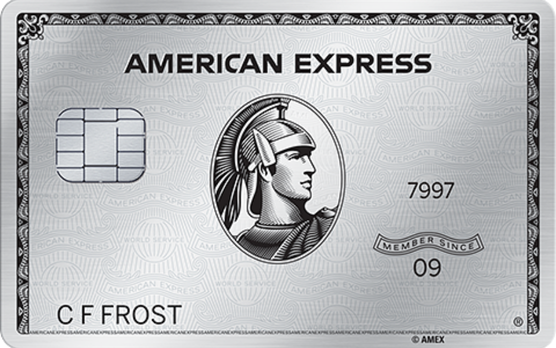
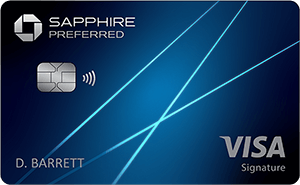
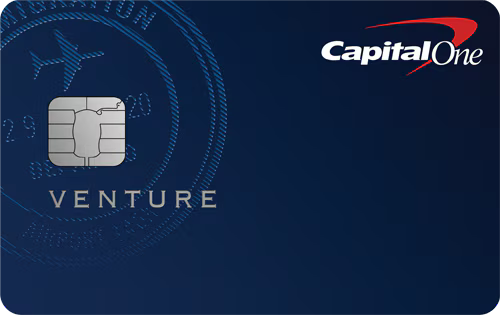
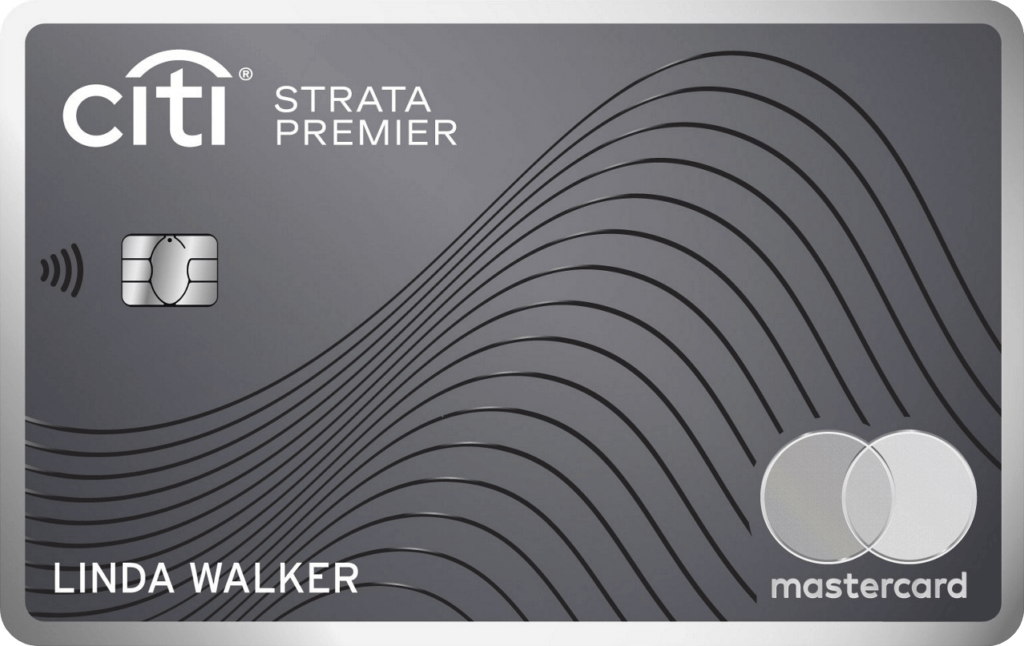
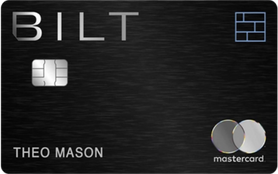
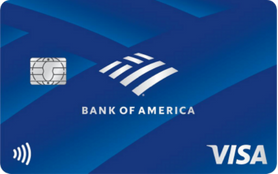
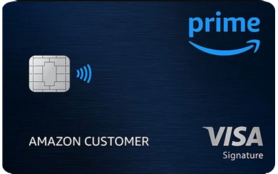
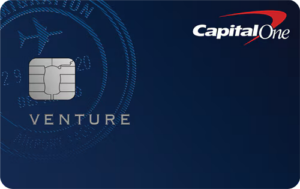

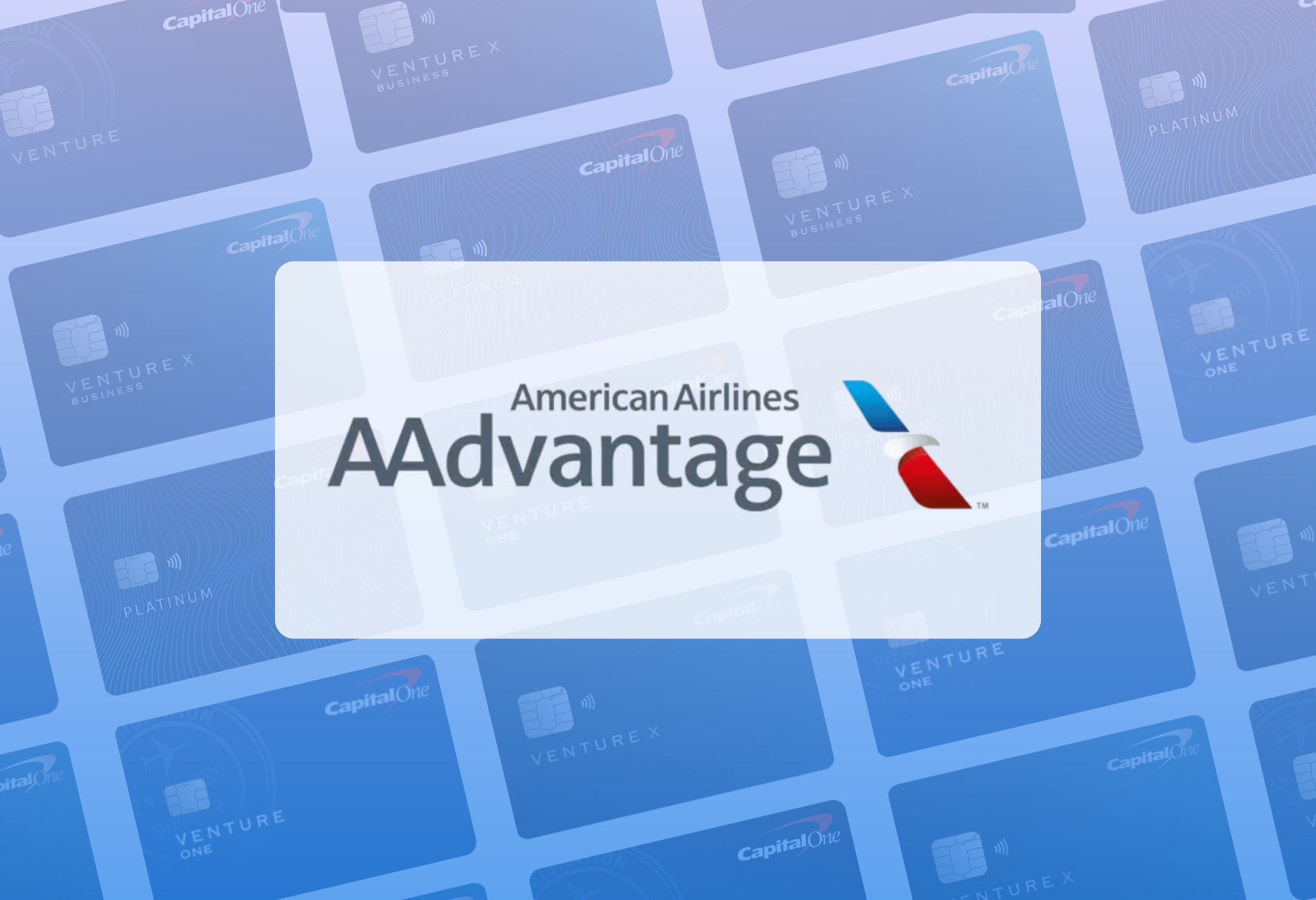


 by your friends at The Daily Navigator
by your friends at The Daily Navigator



